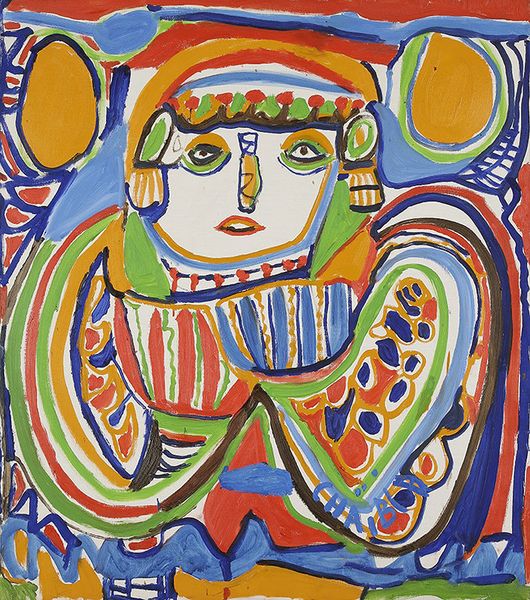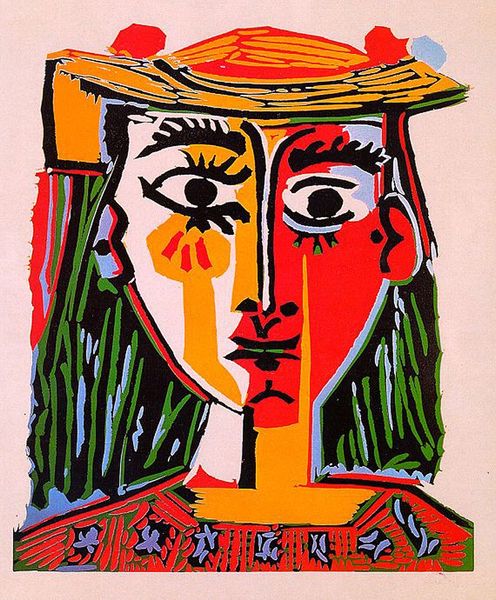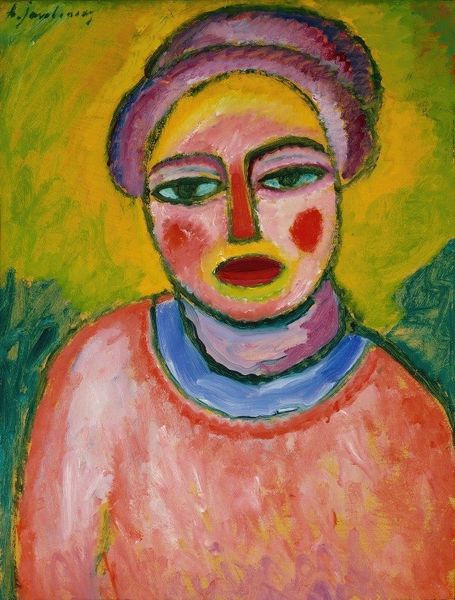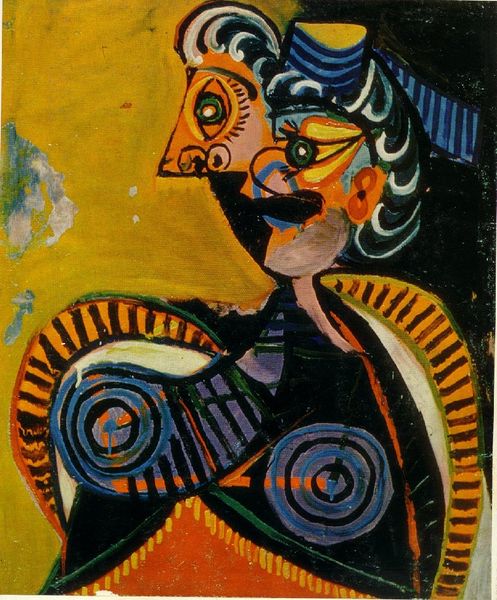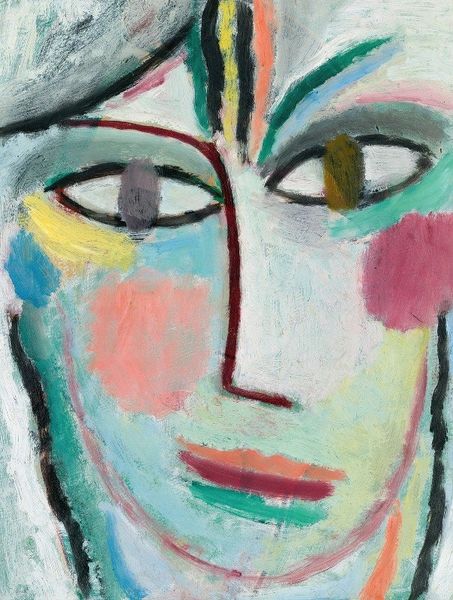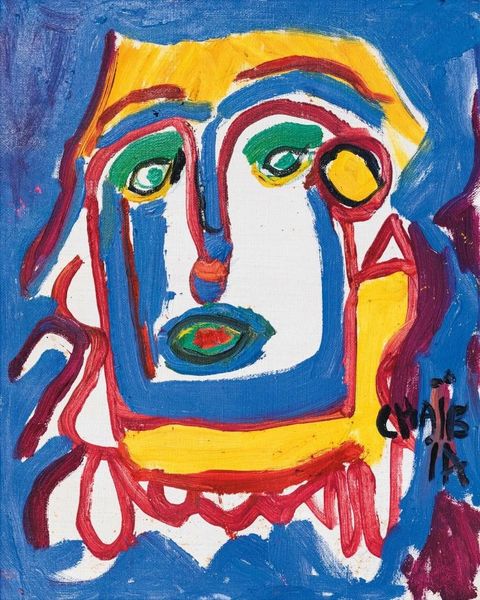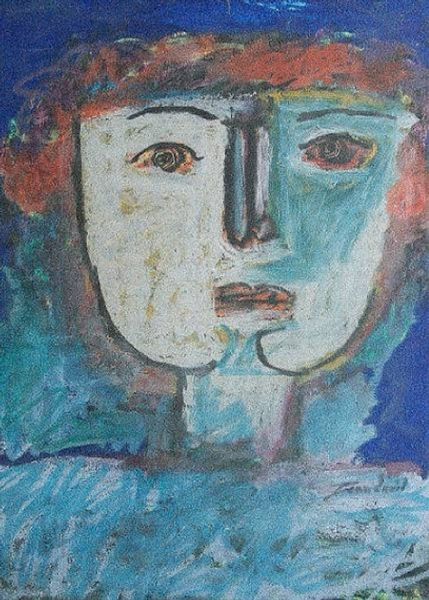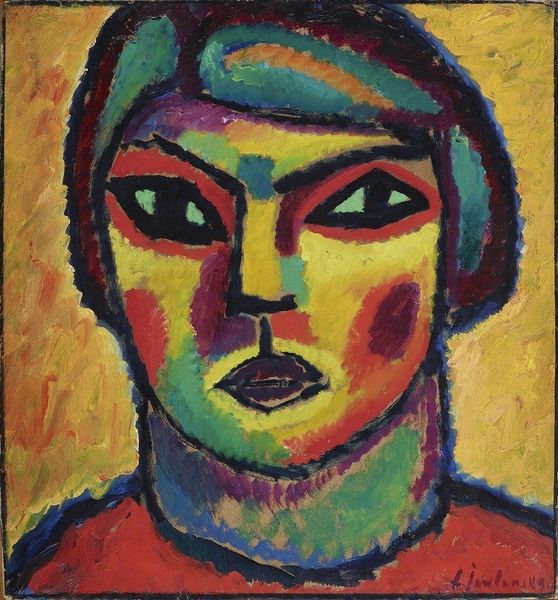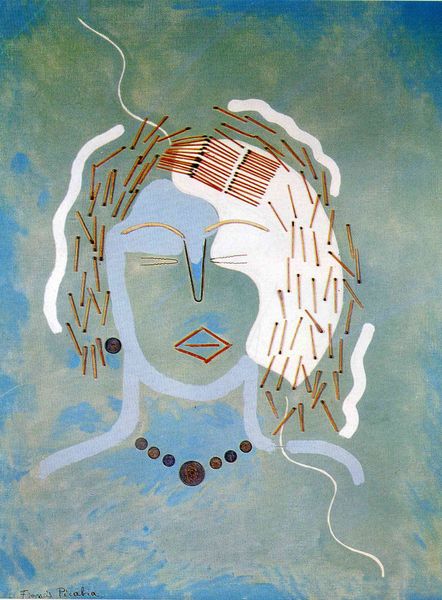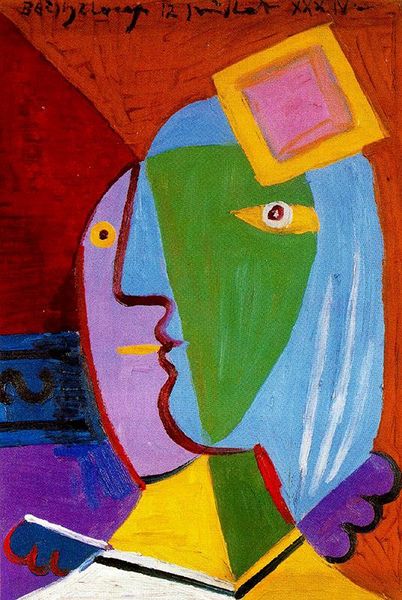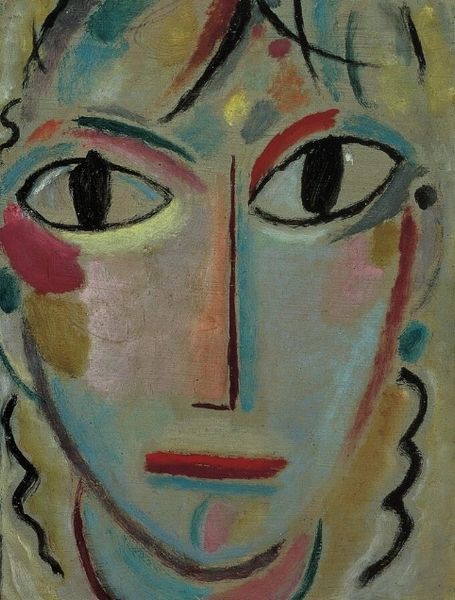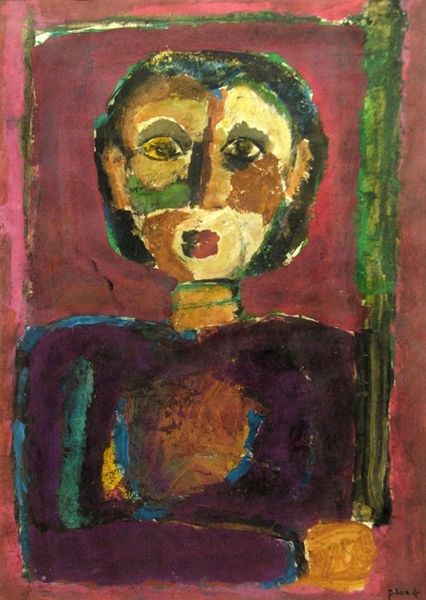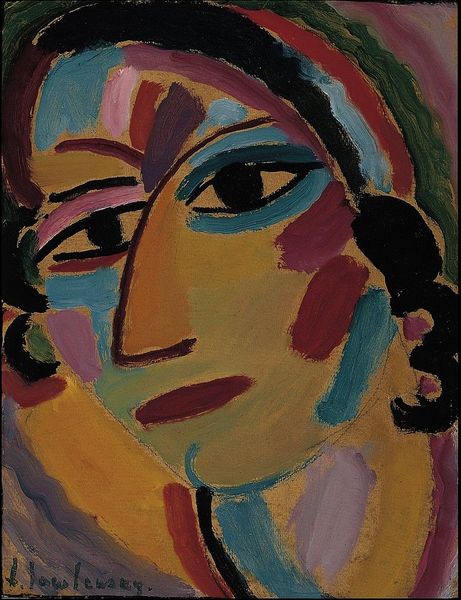
Dimensions: 35 x 27 cm
Copyright: Pablo Picasso,Fair Use
Editor: Here we have Pablo Picasso's "Head of a Woman with Green Curls," painted in 1946, using oil paint. There’s something almost mask-like about it, maybe due to the bold lines and flattened perspective. What strikes you about this piece? Curator: For me, it's impossible to separate this image from the socio-political context of post-war Europe. Picasso painted this after the trauma of World War II, a period of intense re-evaluation of human nature and artistic representation. The fracturing of the face—so typical of Cubism—can be seen as a reflection of a world fractured by violence. The vibrant colors, though, seem to push against the darkness, offering a glimpse of hope or resilience. Do you think this tension plays out in other ways within the composition? Editor: I see it a little in the way the traditional portrait is subverted, almost mocking it. It’s like Picasso is saying, “Here's a face, but what does that really tell you?” Curator: Exactly. And consider who gets to be portrayed. Traditional portraiture often served to immortalize the powerful and privileged. By deconstructing and reassembling the image, Picasso might be questioning those power structures. Who is this woman, really? Is she a symbol of feminine strength or the objectification of women’s beauty in art, or can it be both? And what do the “green curls” signify to you? Editor: That’s interesting. They’re like an odd crown. I didn't even notice the socio-political element originally but that definitely casts a different light on the painting. Curator: Art always operates within these layered contexts. By looking closer, we recognize not just what is on the surface, but also who and what the art represents. Editor: Definitely food for thought! Thanks for sharing your insights.
Comments
No comments
Be the first to comment and join the conversation on the ultimate creative platform.
